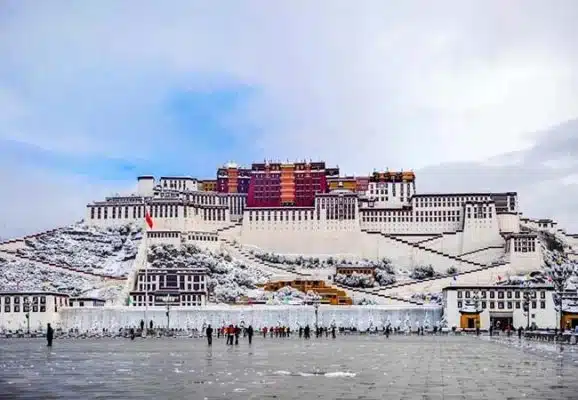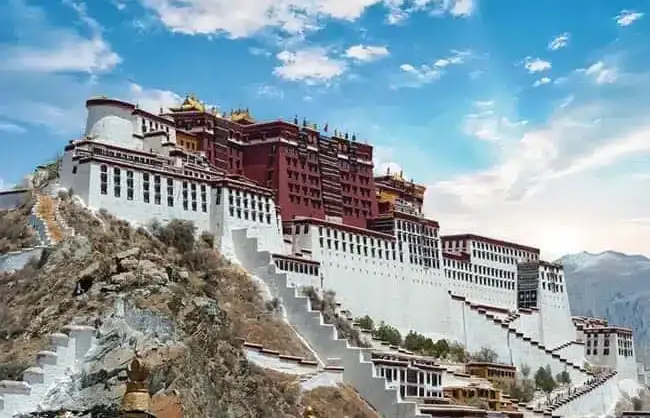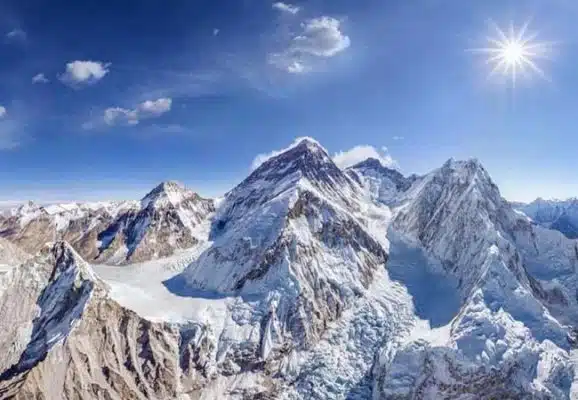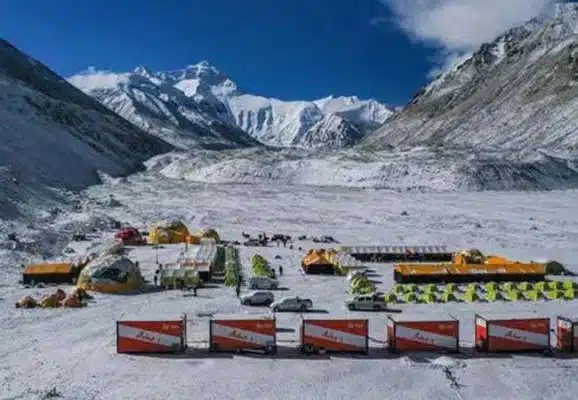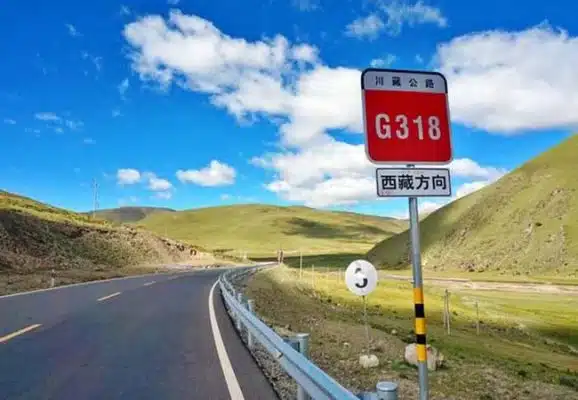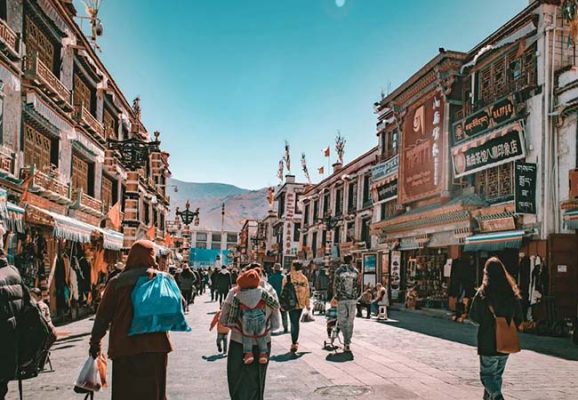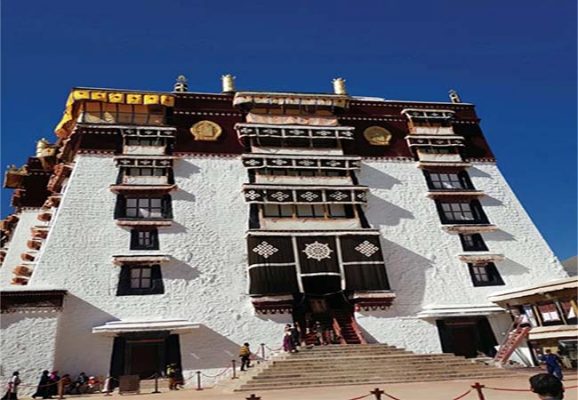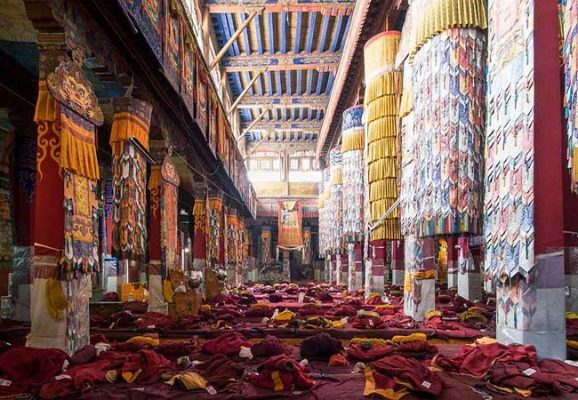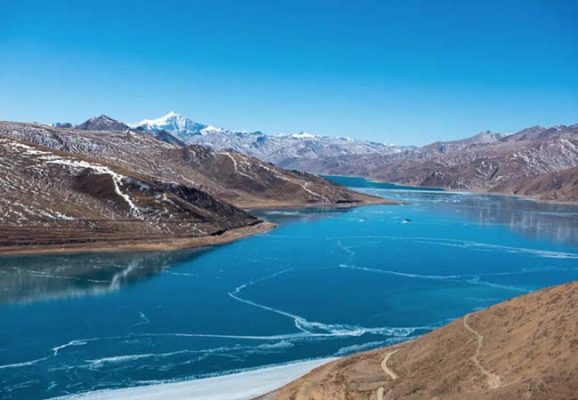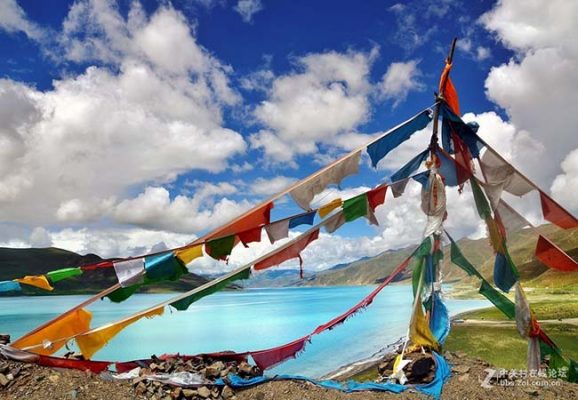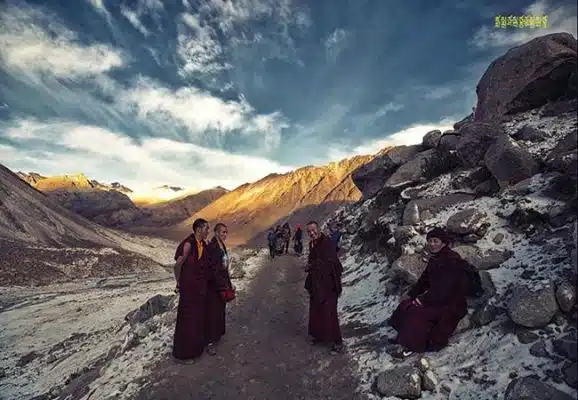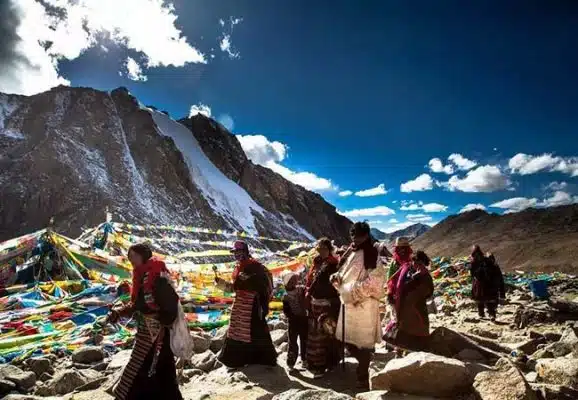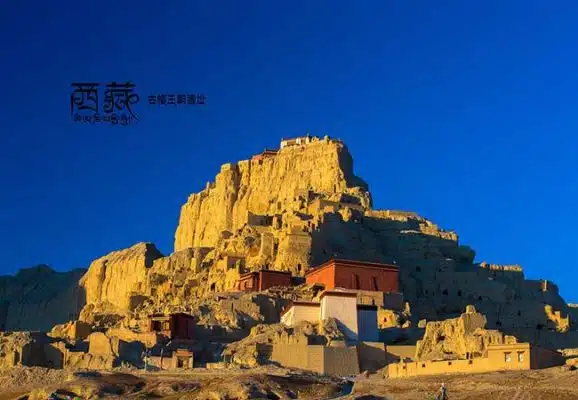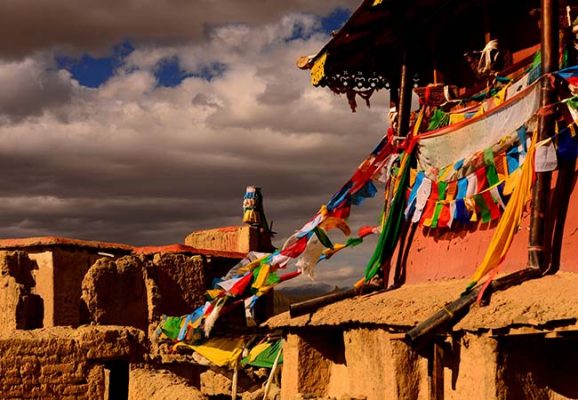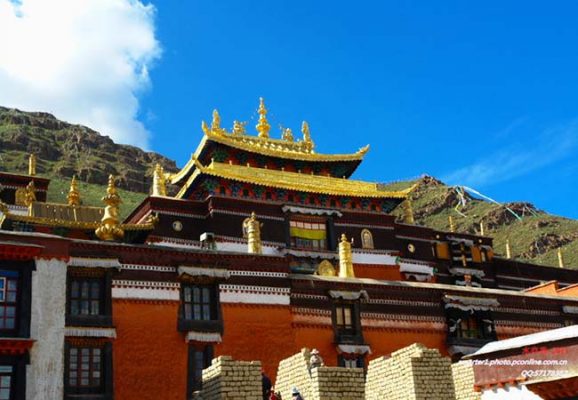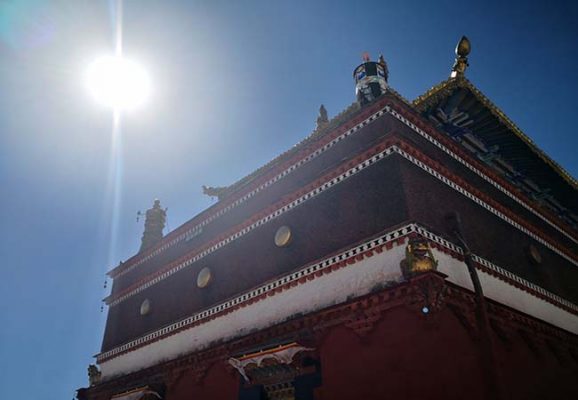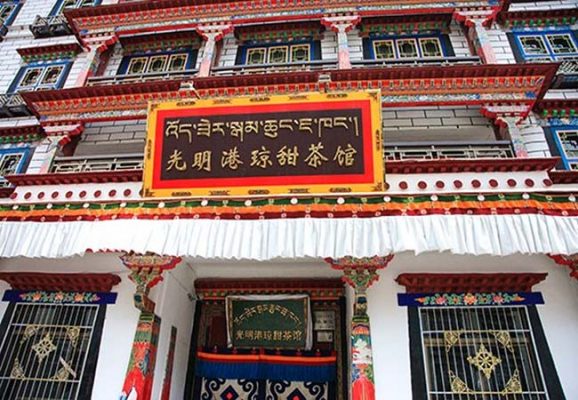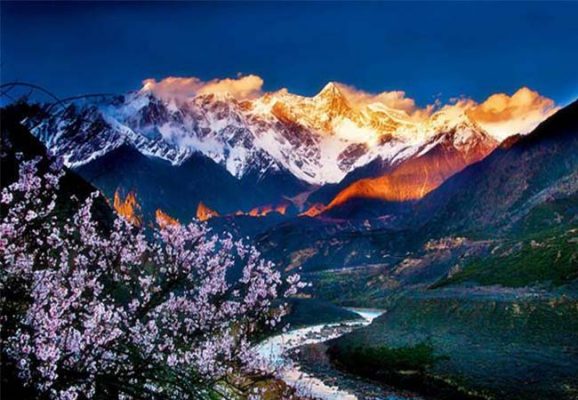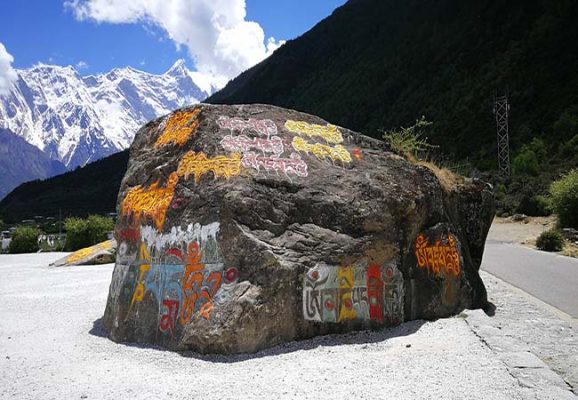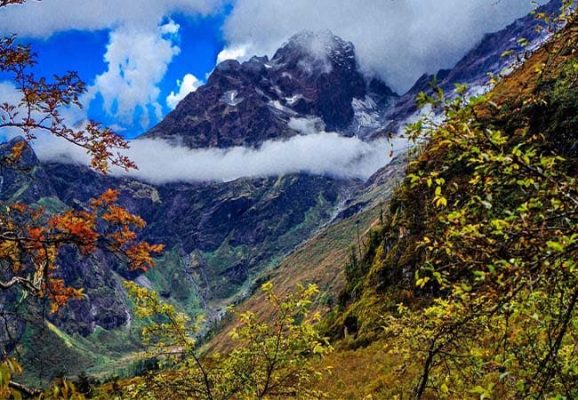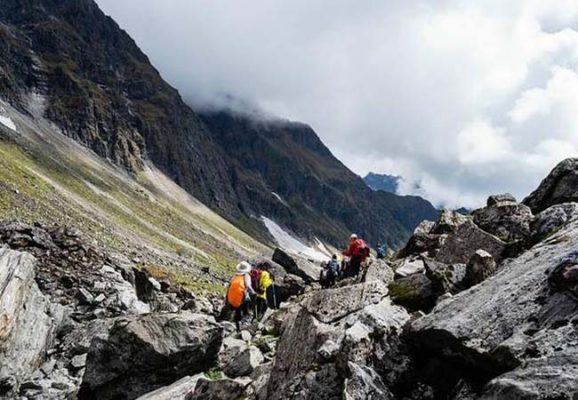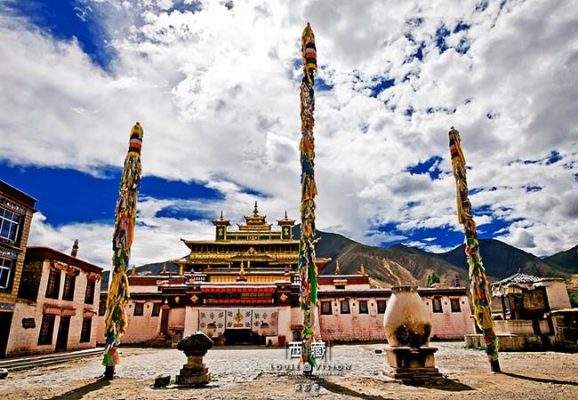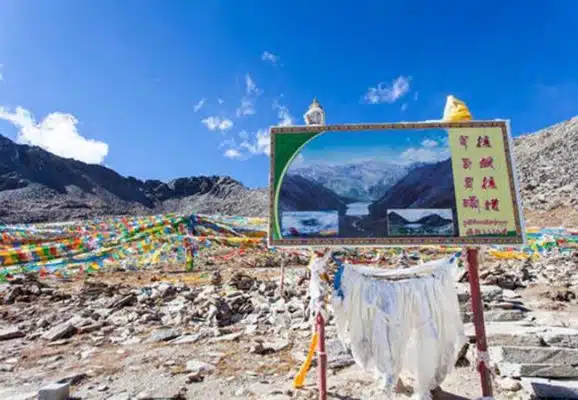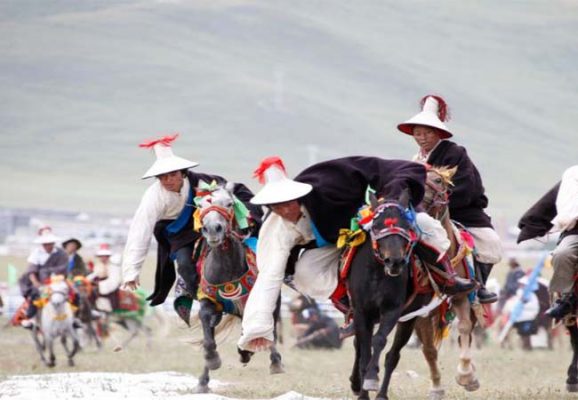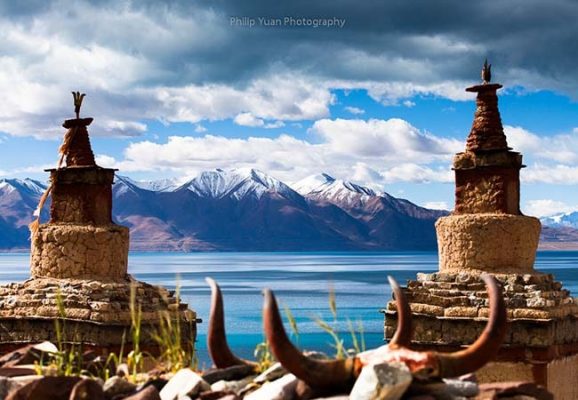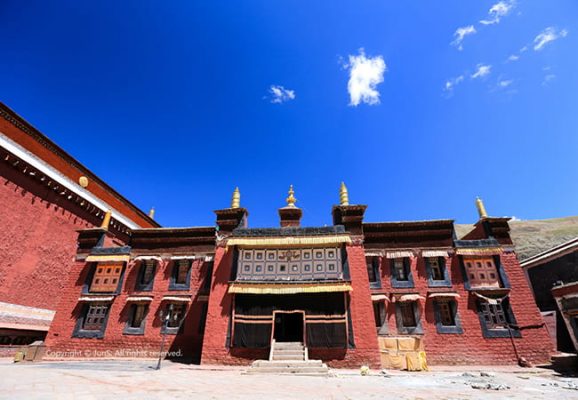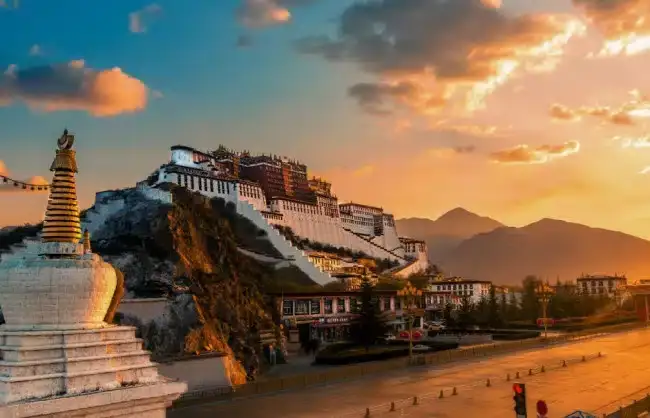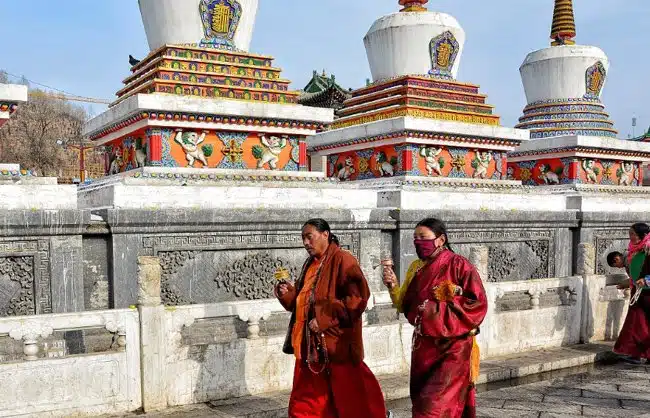Top 17 Travel Experiences in Tibet
Tibet is a mystical place that draws numerous tourists because of its unmatched elevation and extensive historical and cultural legacy. Come here to explore the rich historical legacy and strong religious culture in addition to the breathtaking scenery of the lakes and mountains. Here are 17 of the travel experiences you can’t miss.
1. Potala Palace
Although the Potala Palace is unlikely to be the place where you will meet Tibet for the first time, the idea of “I’m finally in Tibet” still comes into your mind. No one will deny that the beauty of the snow-capped mountains and holy lakes is even more impressive and unforgettable.
The Jokhang Temple is the spiritual center of the Tibetans, but the Potala Palace has long became a symbol, representing the snowy area, and representing the travel belief in the hearts of outsiders. It stands on the top of the Red Mountain, the Potala Palace Square, the Dragon King Pool, the roof of the inn in Barkhor Street and other places, allowing you to enjoy a 360° unobstructed panorama, but it is still recommended that you buy a ticket to enter and take a look at the magnificent scene inside it.
√Related reading: Tibetan Customs and Taboos Worth Knowing before Visiting Tibet
2. Mount Everest
Only by seeing it with your own eyes can you understand the courage that this “highest point of the earth” exudes. Although for most people, it is impossible to spend a lot of money and time to taste the feeling of reaching the top of the world, except for the thin air of Mount Everest, you can also challenge a trekking trip to the east slope of Mount Everest. On this arduous road, accompanied by the most outstanding snow mountain in the world, you refresh your definition of “top experience” every day.
A team leader told us that when he opened the tent early in the morning, he was so excited that he rushed out without wearing his pants!
√Recommended Everest Base Camp Tours: 8 Days Adventure Tour of Lhasa-Gyantse-Shigatse-Mt. Everest
3. 318 Landscape Avenue
You can experience this world-class road in any way, whether it is walking, biking, riding a motorcycle, driving a jeep, or riding a horse. No one will have too many questions about you, because everyone is happily indulging in the unforgettable gallery in this life. Here, all the fuss and compliments will be taken for granted.
Although circling 99 times in a canyon will make you crazy, when you see the peach blossoms and wheat fields at each corner, and the vast grasslands and snow-capped mountains on the top, you will always sigh the magic of nature and gifts of Tibetan areas. Let alone in the jungle under the crystal clear glacier, the pilgrims making worships step by step have moved you.
4. Barkhor Street
“First there was the Jokhang Temple and then Barkhor Street.” This circumvention road stepped out by pilgrims has gone through thousands of years, but it has never lost its popularity. It welcomes pilgrims every day. The sky is getting bright, people have begun to turn clockwise. The flagstone floor in front of the Jokhang Temple has been polished by years of worship. More people move the prayer beads with one hand, turn the prayer tube with the other, or hold a pot of ghee to complete daily routines.
There are legends everywhere on this street. The withered princess willow and the stele next to it show the friendship between Tang and Tibet thousands of years ago. An ordinary house may have lived in famous person in the past, and the beautiful reliefs on the East Sulam wall are also exquisite. Many more interesting things than sunbathing are waiting for you to discover.
√Recommended Tibet tours:
5. Visit the Monasteries in Tibet
It is not an exaggeration to say that there are “one temple in one hundred steps” in Lhasa. In addition to the famous Jokhang Temple, there are also temples with various labels such as the “Four Great Forests”, “Three Great Temples”, and “Regent Residence”. Some temples are larger than villages, some are hidden in markets or residential houses, and those that used to be beautiful may be depressed and deserted.
Some people are obsessed with hanging out thangkas on the Seton Festival in Drepung Monastery, or prefer to go to Sera Monastery to watch a debate; others like to plunge into those unknown temples and listen to monks telling the legend that sounds unreal but has traces; more experienced players always run to the mountains in the northern suburbs, overlooking the city of Lhasa from those beautiful little temples.
6. Yamdrok Lake
Yamdrok Lake is a must-visit place for most travelers to Tibet for the first time. But don’t think that you can definitely see the blue and clear lake in Yamdrok Lake, the weather is very important, only on sunny days, Yamdrok Lake will show you its most beautiful side. When you are amazed by the lake, you will be as convinced as the Tibetans that such a beautiful thing must be a gift from God.
A day trip from Lhasa is the most convenient way to visit Yamdrok Lake. You can also choose another way, choose self-driving, cycling, and even feel its vastness with your feet. Walk into the inaccessible islands, natural and unsophisticated villages, and see the other side of Yamdrok Lake’s kindness and detachment.
√Recommended Lhasa tours: 5 Days Lhasa Essence Tour with Yamdrok Lake
7. Gangrenboqi transition to the mountain
This is one of the most important roads of following faith in the world. A 52-kilometer-long perfect loop will take you to the holy snow peak in all directions. For thousands of years, Buddhism, Hinduism, Bon, and Jainism have made pilgrimages to the sacred mountain according to different rituals, but their firm footsteps and peaceful minds are the same.
Hope you can also embark on this road to the mountain, look up at the magnificent north wall and starry sky at Zhirepu Temple, and climb the 5630-meter Zhuomara Pass with the pious elders, and then enter in the tent with the horse caravan to enjoy cup of warm butter tea in it. After a lap, although you are not sure whether you can wash away the sins of the world as wish, at least your mind will be much clearer.
8. Exploring the Guge Kingdom
The Kingdom of Guge, which existed for thousands of years but died suddenly, left many mysteries. The endless earth forest did not form a barrier-the Indian master Atisha and other monks came to Guge, artists and guests gathered in the royal city from Uzang, India and Nepal, and sent students to Ladakh. Except for the fields that are not allowed by the mountain, Guge does not have a large area of farmland.
Where does the abundance of food and clothing on the murals come from? The royal temple Tuolin Temple held the first Dafa meeting in the history of Tibetan Buddhism. How did the gathered monks 1,000 kilometers away from Lhasa learned the news?
From the hills of the old city, through the caves and red-walled monasteries of common people, dark passages will take you to the top of the mountain where the kingdom and nobles lived. The surrounding soil, forests and mountains are surrounded by enthusiasm, and there is a feeling of nostalgia and seclusion.
√Related reading: 5 Colors of Tibet
9. Zhashilunbu Monastery
As long as you stay in Shigatse, you will not miss this place. This Tibetan “auspicious Sumi Temple” is the spiritual highland of Shigatse. From the Jampa Buddha, who “can hold an adult in the nostrils,” to the magnificent stupa of the 5th to 10th Panchen Lama, Zhashilunbu Temple will bring you the shock and wonder no less than the excitement when you first saw the Potala Palace.
Follow the locals along the outer turning scripture road to the back mountain, you will have the opportunity to overlook the city of Shigatse. If you come to Shigatse on April 15th of the Tibetan calendar (around mid-June of the Gregorian calendar), don’t miss the three-day Buddha Exhibition here. At that time, the current Buddha, the future Buddha, and the past Buddha will be displayed on the exhibition stand.
10. MakeSweet Tea House
It is said that sweet tea is a way of life brought by the British, and it was once exclusively enjoyed by Tibetan nobles. After entering “into the new era”, sweet teahouses appeared on the streets of Lhasa, but they were forbidden for women. Nowadays, the two most famous and largest teahouses in Lhasa are still men playing the leading actor. The environment is really not good. Simple long tables and benches, where people you know and don’t know sit in front of each other and chat, and the waiter is busy pouring tea for the guests.
Tibetan women also have a “fixed date” tea house with a small space and looks much cleaner. There are competent professional women, and also neighborhoods, just like a meeting place for best friends. For travelers, making sweet tea house is a must-experience program in Lhasa.
√Related reading: What and Where to Eat in Lhasa and Shigatse: Top Tibetan Restaurants
11. Yarlung Zangbu Grand Canyon
The place we can reach is actually the smallest entrance of the vast world’s largest canyon, but it seems to open up a universe. Just like the beautiful peach blossom on the balcony of the inn in Suosong Village, once reflected in the white snow of Nanga Bawa Peak, it will be kept in mind forever. In fact, the beauty of the Grand Canyon lies not only in the wonder of nature, but also in its lifestyle of integrating nature and man.
When you walk along the river bank where you can see the snow-capped mountains leisurely and watch the beautiful and arrogant river rushing, the residents of the river bank are still repeating the work and rituals of spring, summer, autumn and winter day after day. Those fragrant matsutake mushrooms, sweet apples, and oily walnuts are all rewards given to them by the snow-capped mountains.
12. Hiking in Motuo
Hiking in Motuo is like walking into history, whether it is natural history or human history. In those high-rise forest sections, looking at trees that are thousands of years old, you will feel like the protagonist of a time-travel drama through the magical world by mistake. However occasionally there are Monba or Tibetans carrying goods, which makes you feel that you have returned to the era of opening up wasteland. From coniferous forests and snow-capped mountains to spruce forests and tropical forests, it is only separated by a mountain.
There is such a big difference between the upper and lower reaches of the Yarlung Zangbu River. If you hadn’t walked along this way for 3 days, you would not really understand the richness and wonders of this lotus land.
13. Samye Monastery
The shadows of the trees on the Yarlung Zangbu River are fascinating, and the Samye Monastery is a mandala on the sandbank beside the river. The creator used simple but complicated designs to build the entire world and the universe. The architectural layout of the temple seems to be loose, but in fact there are mysteries every step of the way, and even the location of a tree is particular designed.
You can easily find the corners of the aura in its subtle layout. That is your world. If you feel that you can’t see the pattern in the temple, you can climb the Haiburi sacred mountain guarded by Master Jihu, and look down at the temple and the river from the top of the mountain. The lightness and strength of the Samye Monastery that locks the entire Yarlung Zangbu Plain is extremely shocking.
√Recommended tour: 6 Days Lhasa and Tsedang Tour
14. Lhamo La-tsoLake
The bumpy roads on the Yarlung Zangbu River, the Cui Jiugou that is often covered by heavy snow, and the long and difficult journey to Lhamo La-tso seem to be a natural omen, all of which show that real divine enlightenment are always not so easy to be got. And in the end, when you are out of breath and dare not make loudly noise when climbing the steps and reaching the 5,300-meter lake viewing point, the urgency and hope will be quietly pressed down by the silence of the pilgrims around you, and then calm down by everyone’s peace. Then watch the changes in this small lake together. If you see the slightest changes in the clouds and light in the end, pray for yourself and the world.
15. Celebrate Festivals with the Tibetans
If you want to quickly feel the Tibetan customs, just join the local festival. During the Snowdon Festival, when the thangka of Drepung Monastery is slowly unfolding, no one does not excite for it; whether you are used to the smell of ghee or not, at the festival of ghee lanterns, you will be amazed by the works of art made by ghee; the Lantern Festival will have a city without darkness with stars and lights.
If you happenily meet with a Dafa ceremony in a temple, you will see Buddhist music and dances that have been circulating for thousands of years; what is even more exciting is the Fruit Festival of the countryside. During this festival, you can set your own date, sing and dance yourself; those who are greedy for beautiful scenery, of course, must rush to Nyingchi when the peach blossoms are in full bloom.
√Recommended tour: 7 Days Best Scenic Tour from Lhasa to Nyingchi
16. Tangra Yumco
If you only see one lake in northern Tibet, then come to Tangra Yunco. In addition to the incredible blue, the mystery of the ancient Xiangxiong dynasty and the local Bon religious half-agricultural and half-pastoral life have injected deep and vivid characteristics into this beautiful lake. Living in a Tibetan-style family hotel, watching the color change of the holy lake outside the window; walking into the golden sands of the farmland and working with the locals on the hardest land; riding on the locals’ motorcycles to watch the turning scripture in the Bon religion of Qiongzong Divine mountain.
You will be thankful that you are here, and you kind of want to keep this secret deep in your heart.
17. Sakya Monastery
It is difficult for you to see such a unified scene of temples and dwellings elsewhere. Sakya, far away from the China-Nepal Highway, is not like Gyangze that can be visited by the way. Because of this, it has a purer religious atmosphere. Historically, the Sakya Temple was once the political and religious center of Tibet, with a rich and splendid cultural history. The rigorous South Temple and the North Temple, which can be called a “relic” separated by a river, built a complete Sakya Temple, and the Sakya Sect moved to Tibet from here. After watching the breathtaking treasures in the South Temple, slowly go up the mountain along the trails of the North Temple, overlooking the Zhongqu River slowly passing through Sakya City, you will want to sit down here quietly and imagine the once brilliant Sakya Dynasty.
Related reading:
- Lhasa Side Trip to Chentang Village in Shigatse, the Last Solitary Island in Himalayas


